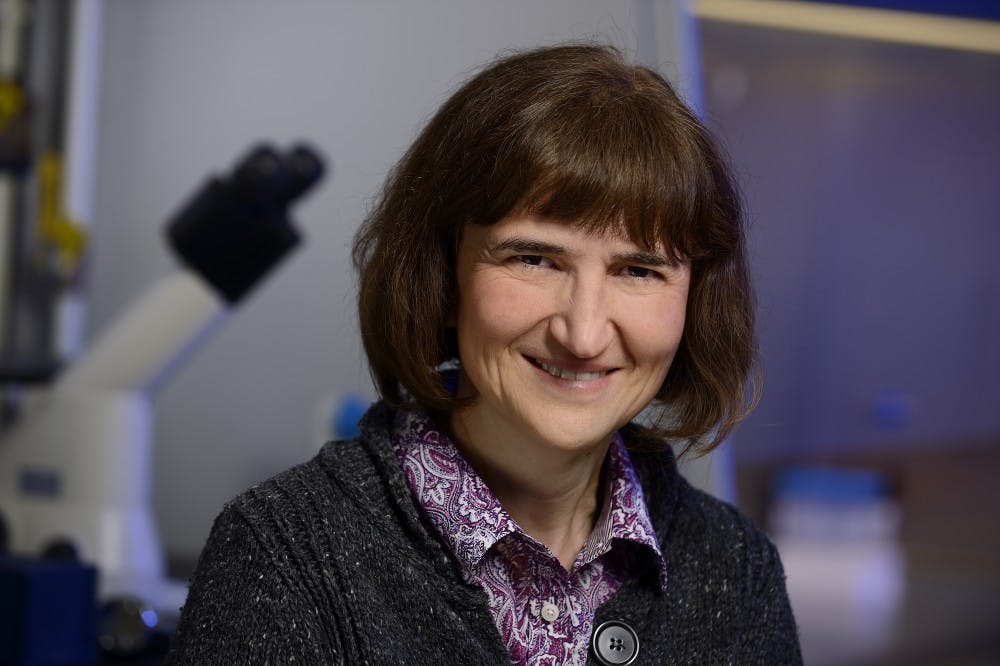Perhaps one would not consider a biological cell membrane a material that can be engineered. But for Kalina Hristova, it is.
Hristova is a professor of materials science and engineering. Broadly, materials scientists research interactions between molecules and study how those interactions contribute to the efficacy of a structure.
“Materials science uncovers how molecules work together to build structures which are useful in one way or another,” Hristova wrote in an email to The News-Letter. “Some materials scientists study how molecules work together to build the strongest rope one could imagine, so that it could rapidly decelerate an aircraft as it lands.”
Hristova’s Biomolecular Materials & Membrane Biophysics Lab (BMMB) does not study ropes which can decelerate planes, nor does it study materials like metallic glasses or organic semiconductors.
Instead, as the name implies, the lab focuses on biological membranes. Biological membranes are critical structures because they control communication between a cell and its environment.
In particular, BMMB studies the thermodynamics and structural principles which govern protein-folding in and signal-transduction across biological membranes.
“Structure and thermodynamics underline the performance of any material, including the biological membrane,” Hristova wrote.
In fact those two principles are among the first that Materials Science and Engineering majors study at Hopkins. Hristova teaches a class where students discuss how protein structure and thermodynamics underpin some of the most devastating human diseases.
The family of proteins which are of special interest to Hristova are receptor tyrosine kinases (RTKs). Hristova considers RTKs one of the most important membrane proteins because they control cell growth, differentiation and motility.
Since RTKs are implicated in cancers and growth disorders, they have been identified as potential drug targets for treatment. While there have been advancements, scientists have yet to create a “miracle drug.” Hristova attributes the dearth of treatment options to the scientific community’s shallow understanding of basic RTK mechanisms.
“In part, [the lack of therapies] is because of gaps in basic knowledge of how the receptors transmit biochemical signals across the membrane,” Hristova observed. “But it is known that they do so via lateral interactions in the membrane, and we have been developing quantitative methods to study these interactions.”
The quantitative methods that BMMB developed do not apply only to RTKs. The group has used those methods to study other protein receptors as well. Comparing different families of receptors revealed many common features but also key differences among them. Such comparisons may allow for the eventual development of novel therapeutics which display high specificity but low toxicity.
Several projects currently underway in BMMB have therapeutic potential. One project involves investigating the normal operations of receptors in the plasma membrane and how dysfunctions in those operations can lead to disease.
Another project explores the utility of small peptides as drug delivery agents. According to Hristova, these peptides interact with the biological membrane and can either cross the membrane without disturbing it or can destroy the membrane if they are triggered.
Yet another one is attempts to develop new methods which will allow scientists to visualize the functioning of molecules in the biological membrane. The lab is primarily using fluorescence to visualize the molecules.
The wide range of projects which fall under the umbrella of materials science is in part what attracted Hristova to the field. When she was a student, she liked physics, chemistry and biology. Materials science, which combines elements of the three, was the perfect match.
So after she completed her undergraduate education, she chose to research biological membranes as the focus of her studies at the Department of Mechanical Engineering and Materials Science at Duke University.
Since then, biological membranes has remained her primary research area. But throughout her academic journey the motivating factors for Hristova have been to work on challenging problems and develop solutions which will eventually lead to better health outcomes.
With her research, Hristova is certainly doing both.





